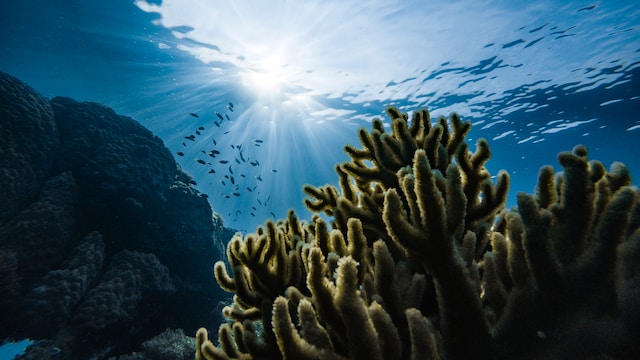People of Belize require policies and laws which respect their environment and uphold international environmental laws, but good intentions and legislation alone won’t go far without adequate funding for enforcement.
As a developing nation, Belize faces many of the same environmental conservation issues that other developing nations encounter; yet this small nation takes its commitments seriously and regularly updates its environmental protection laws.
The Role of Lawyers
Belize is home to numerous environmental laws that establish protected areas and safeguard flora and fauna, but there remain several environmental challenges for which legal attention should be sought in Belize. These include lack of coordination among government ministries involved with conservation; illegal harvesting of flora and fauna for commercial gain; illegal logging practices; as well as invasive species invasion. Lastly, limited financial resources prevent full implementation of existing environmental legislation.
Due to these challenges, Belizean government needs to increase investment in natural science research and provide better training for natural scientists. Furthermore, part of their oil revenues should go toward conservation initiatives.
Furthermore, a more holistic approach to land-use planning is necessary. Current land-use policies which mandate that owners of forested lands clear them for development in order to retain their leases are one source of Belize’s high deforestation rates; by making simple adjustments to land tenure legislation this could significantly decrease deforestation rates.
An integrated national protected area system is also necessary. At present, protected areas are scattered across the country without an effective plan or scheme for managing them, making it hard to monitor wildlife movement and grazing patterns effectively.
Another factor contributing to natural resource degradation and increasing health issues in Myanmar is its lack of sewage waste treatment plants, with much of the population’s sewage being dumped directly into the sea, potentially polluting and harming coral reef ecosystems.
Failing to address these problems promptly could prove devastating for an ecosystem which has served as the backbone of its economy for so many years.
Government authorities have also approved numerous development projects without conducting environmental impact analyses as required by law; most of these projects are focused along coastal and caye areas.
Past projects that provoked sufficient public opposition were halted when enough citizens opposed them; for example, the Chalillo Dam on Macal River was stopped after two judges found that its failure to disclose a major fault line and issue an accurate geology report were flagrant violations of law.
As a result of these developments, it is essential that lawyers accept the challenge of advocating for the preservation of Belize’s environment and biodiversity. This can be accomplished through working with non-governmental organizations, media outlets, private companies, fellowship programs and internship opportunities both locally and abroad aimed at training young lawyers in environmental law; fellowships will introduce young lawyers to issues facing Belize as well as equip them with tools needed to effectively advocate for its natural heritage preservation.
Cases Related to Protected Areas
Belize, in its short history as a nation, has pioneered innovative approaches to conservation. One such example is co-management of protected areas between government agencies and private individuals/groups; then in 1984 the GoB adopted a practice where BAS would take responsibility for managing some early protected areas, creating a model widely recognized worldwide (Salas 1993).
Second was the Community-Based Conservation (CBC) movement. The idea behind CB is that communities themselves initiate the process of designating national parks, wildlife sanctuaries and other protected areas themselves and with Government support – sharing in both management and financial benefits of these ecotourism sites in return.
CB emerged as an attempt to reconcile economic development with environmental protection and preservation in developing nations, an issue brought up at Rio de Janeiro at the 1992 Earth Summit (UNEP/WCMC 1997). Community-based solutions proved highly successful in Belize beginning with the Seven Communities of Five Blues Lake National Park initiative initiated by five villages including Flowers Bank, Scotland Half Moon, Double Head Cabbage Willows Bank St Margarets Point Gales Point with assistance from Community Conservation (CC) organization (Horwich and Lyon 1999).
CC joined with the community on Earth Day 1991 to draft and fund Five Blues Lake National Park’s management plan and to introduce conservation awareness in rural communities that had previously been unaware of its need. After seeing how successful CBS villages had been at establishing initiatives with Government support to join in this ecotourism and conservation initiative.
At the grassroots level, Belize has taken significant strides in protecting its natural environment through community initiatives like Turneffe Atoll Trust which successfully filed legal challenges to stop an environmentally damaging development project that was ultimately abandoned. Monitoring of all permitted development is also vitally important to preserving Belize’s precious ecosystems.
Belize is a developing nation with a high poverty rate; more than half its population will be aged 50 or under in 25 years. Decisions taken today could have lasting impacts on this nation and its people; consequently, the government of Belize takes its role as protector of environmental heritage seriously and supports preventive measures over reactive ones; should preventive measures prove ineffective, legal action may become necessary to preserve a bright future for this country and its people. The Belize Institute of Environmental Law and Policy (BIELPO) strives to make sure future is bright by supporting preventive measures being promoted by BIELPO to make sure future is bright.
Cases Related to Wildlife Preservation
Belize, with its abundance of natural resources, must take great care to protect its wildlife and environment. Enforcement must not simply rely on laws and policies; proper funding must also be available to implement sustainable development practices within the country.
National Conservation Council was successful in convincing Belize Government to invest a staggering US$5 million per year towards marine protection for three years – this significant sum will allow Belize to make significant strides toward protecting its marine resources against threats that threaten them.
Belize’s natural habitats are threatened by high rates of deforestation and ineffective waste management practices, compounded by rapid coastal development projects and cruise tourism promotion. To address these threats, Belize needs to identify economic contributions of biodiversity and ecosystem services to its economy as a form of leverage in cost-benefit analyses of decisions that impact these natural resources.
Poor Belizeans often live in environmentally sensitive areas where subsistence agriculture and harvesting of forest products such as medicinal plants, wood carvings, bush meat, and cultural artifacts provide sustenance. Unfortunately, such activities can result in overharvesting endangered species as well as illegal sales on black markets – this requires increased financial and personnel support from Belize’s government for environmental protection agencies.
Additionally, the government should invest more in natural science research and infrastructure as well as introduce students to careers in the sciences. This will foster a cadre of Belizean scientists capable of protecting and managing Belize’s rich natural wealth. Furthermore, creating more opportunities for Belizeans to take part in biological fieldwork as well as learning about best conservation practices from other countries will instil in them an appreciation of conserving their country’s environment as well as being leaders within their region and beyond.




